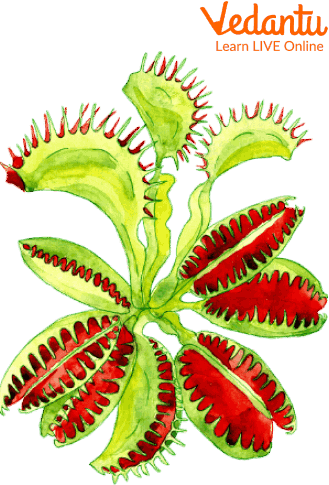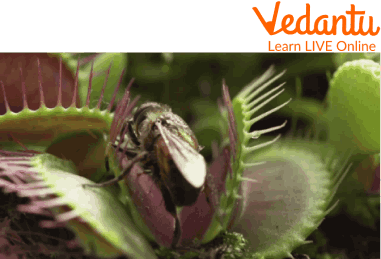




How Do Venus Flytraps Catch and Digest Their Prey?
The world is full of mysterious animals and plants. We all know quite a lot about animals but little about botany. Just like human beings, plants are also categorised into five parts, they are herbs, shrubs, trees, creepers, and climbers. Now, we are quite sure most of you might have heard about the Venus flytrap. It is a carnivorous plant that is mostly found in subtropical wetlands.
Yes, you heard it right it is a carnivorous plant. This plant mostly feeds on small insects. In fact, the primary prey of this plant is ants. Other insects eaten by this plant are flies, bugs, beetles, bees, spiders, tiny frogs, and many more. Further in this article, we will talk about what is venus flytrap, venus flytrap facts for kids, venus, and how the venus flytrap eats insects.
What is a Venus Flytrap?
Just like the venus flytrap, there are many other carnivorous plants in the world. Some other carnivorous plants are Drosera Capensis, California Pitcher Plant, Purple Pitcher Plant, Yellow Pitcher Plant, and many more. These plants too consume most of their nutrients from trapping small insects.
The Venus Flytrap is widely found in the wetlands on the East Coast of the United States. Interestingly, the catching of its prey is very unique to any other carnivorous plant. The trapping structure of this plant is very sensitive as it senses all insects. Now, let us talk more about this plant, shall we?

Venus Flytrap
Venus Flytrap Eating Insects
Most of us might have the idea of carnivorous plant-eating insects but how do they digest? In this case, when an insect or fly crawls along the sensitive leaves, the trap of the plant prepares to close. In fact, within twenty seconds of time, the trap closes and makes its first strike.
People might know that the shutdown of the traps may occur within a tenth of a second. Once both the traps are closed, the digestive glands present inside start doing their function. The digestive glands are present on the interior edge of the leaf. This gland helps the plant to secrete fluids from the insects.
It not only helps in secreting the fluid from insects but helps kill bacteria and fungi. The glands help the insect or fly to break down into small pieces and go deep down the root. It also provides proper nutrients to all parts of the plant. This is how one can see venus flytrap-eating insects.

Venus Flytrap Eating an Insect
How Does Venus Flytrap Eat Insects?
The eating procedure of this carnivorous plant is quite simple. The main question that arises here is how a Venus Flytrap attracts insects. The attraction of insects or flies is quite interesting and unique for this carnivorous plant. In fact, this plant can tell that it has captured a tasty insect.
This carnivorous plant pleases its prey with an outcoming fruity scent. Interestingly, this fruity scent is so attractive that many insects are trapped. The moment an insect sits on the leaf of this plant it stimulates highly sensitive trigger hairs. This trigger hair is found on the line of the leaf.
When the pressure on the outside leaf becomes strong because of the sensitive triggers it strongly closes the bends. The leaves are shut as soon as possible so that the insects do not fly or move away. Then the digestive juices break down the food and take an average of 12 days to be fully digested.

Venus Flytrap Eating Insect Procedure
Venus Flytrap Facts for Kids
Carnivorous plants are quite amazing in themselves. The kids will surely love watching this carnivorous plant eating a variety of insects. Now, some of the fun facts about this plant are the following:
The Venus Flytrap is the only carnivorous plant that is found in the United States of America.
Every plant in the world has a scientific name and so does the Venus Flytrap. The scientific name of this plant is Dionaea Muscipula.
The Venus Flytrap was first discovered way back in 1768 by British governor Arthur Dobbs.
The Venus Flytrap is one of those rarest plants in the world that has the capability to create fast movement.
Once the insects caught by the plant are digested, it immediately reopens to capture another insect.
Summary
Venus Flytraps are quite interesting in themselves. Today, the Venus Flytrap extract is available on the market as a herbal remedy. It is used for various medical purposes even for some domestic animals. The plant might be carnivorous but it helps humans treat HIV, Crohn’s Disease, and skin cancer. In this article, we had a look at the Venus Flytrap, and how it eats insects. We also learned some Venus Flytrap facts for kids in this article. We hope you enjoyed reading this article, in case of any other doubts, feel free to ask in the comments.
FAQs on Fascinating Facts About Venus Flytrap for Students
1. Can a Venus Flytrap hurt a human body?
Venus Flytrap is not very powerful to hurt the human body.
2. What is the lifespan of a Venus Flytrap?
A Venus Flytrap can live up to twenty years in the wild jungle.
3. Does the Venus Flytrap have brains?
The Venus Flytrap might work like the human mind but it does not have a brain.









